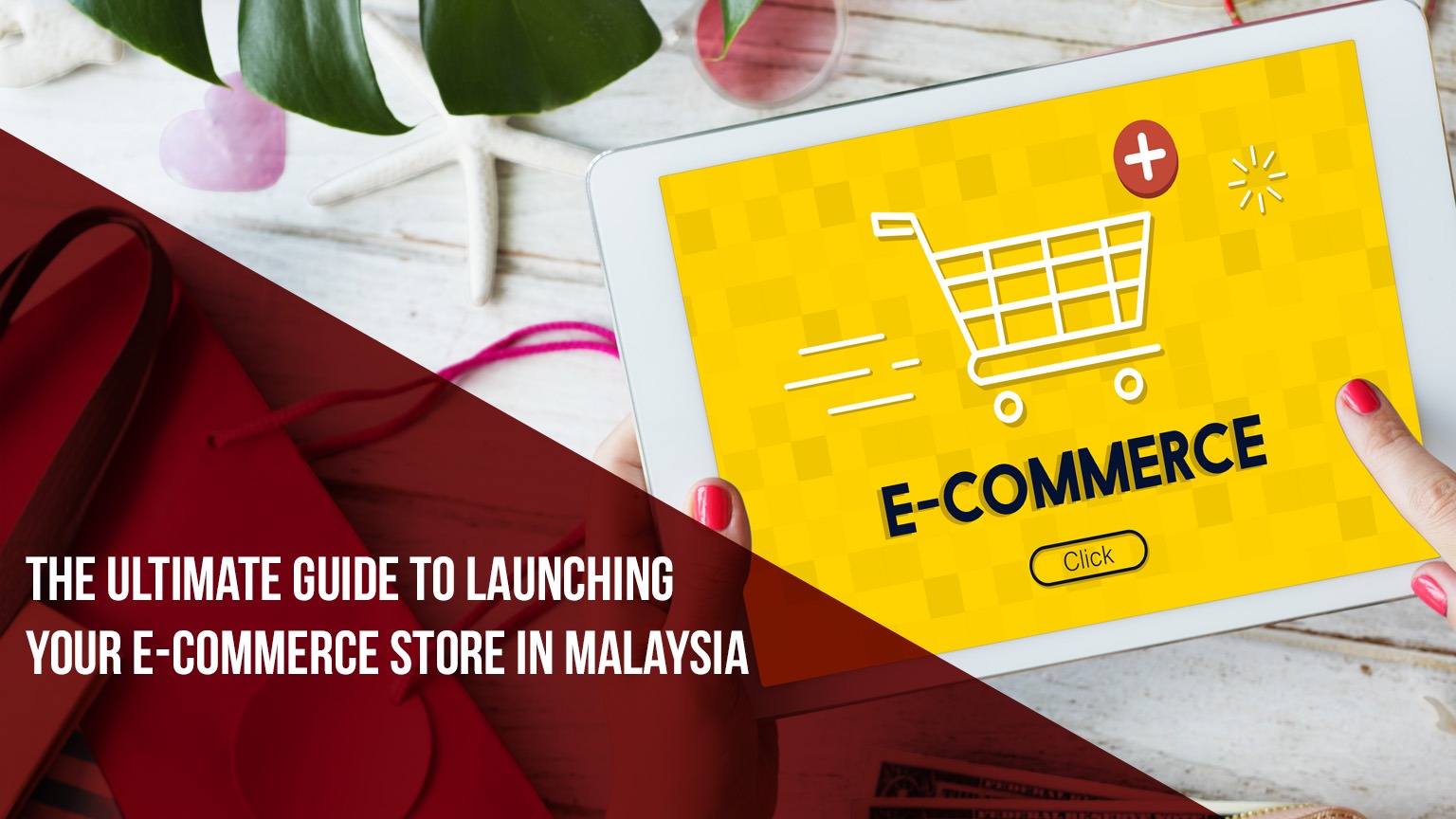Guide to Ecommerce website development and its Growth
In recent years, ecommerce development in Malaysia has seen a remarkable surge. According to statistics, in Southeast Asia, 30% of eCommerce transactions are from Malaysia.
One of the reasons for this increase in eCommerce is due to the pandemic. Physical stores were temporarily closed, which created the necessity for online shopping. According to the International Trade Administration, Malaysia has a high eCommerce adoption rate due to 80% of the population being active Internet users and high mobile phone penetration.
The Malaysian government has introduced measures to encourage eCommerce growth. The implementation of the National eCommerce Strategic Roadmap (NeSR 2.0) aims to help almost 900,000 micro, small, and medium entrepreneurs go online by the year 2025. Initiatives such as the Digital Free Trade Zone and the Digital Economy Blueprint offer tax incentives and infrastructure development.
Therefore, now is the perfect time to start an eCommerce website development in Malaysia. If you have an idea for an eCommerce store but don’t know where to begin, this blog is for you. This blog will guide you through the essentials to launch your eCommerce store.
The Business Model
Once you have a vision for your eCommerce website development, it is time to select a business model. There are various business models you can choose from:
- Business-to-Business (B2B)
- Business-to-Consumer (B2C)
- Business-to-Business-to-Consumer (B2B2C)
- Consumer-to-Business (C2B)
- Direct-to-Consumer (D2C)
- Consumer-to-Consumer (C2C)
For more information, visit the Malaysia Digital Economy Corporation (MDEC) website. Make sure the business model you choose aligns with your business strategy.
The Market Research
Market research is crucial to help you understand the competition, your target audience, and consumer behavior and preferences. Market research is an ongoing process as the eCommerce landscape is dynamic and ever-evolving. Therefore, stay up-to-date on the latest trends and adapt your strategies accordingly.
The Business Plan
Now, it is time to develop a detailed business plan. Your business plan should involve the mission, the vision, the business model, goals, and financial projections.
Identify the big picture of your business, including the core values and purpose. Plan out your goals and objectives. Outline how you plan to generate revenue. Highlight the unique selling points of your business. Create a marketing and sales strategy.
Financial projections include income statements, balance sheets, and cash flow statements. Also, determine when your business will become profitable and identify potential financial risks.
The Name
Selecting your business name is one of the vital decisions to make as the name forms your identity. Therefore, choose a name that stands out and matches your business’s goals.
Ensure to brainstorm different names and check the availability of your preferred name. Then, register it with Suruhanjaya Syarikat Malaysia (SSM) or the Companies Commission of Malaysia. You can also consider trademarking it with the Intellectual Property Corporation of Malaysia (MyIPO).
The Registration
Before registering, you need to decide on the legal structure of your eCommerce business, such as a sole proprietorship, partnership, limited liability partnership (LLP), or private limited company (Sendirian Berhad – Sdn Bhd). Each structure has its legal requirements and implications.
If you choose a corporate business structure, register it with the SSM. You may need to register with the local municipal council for sole proprietorships and partnerships. You may also require specific licenses or permits.
The Legal and Regulatory Considerations
Comply with tax obligations (Sales and Service Tax and income tax) and Malaysia’s Personal Data Protection Act. If you’re involved in cross-border e-commerce, understand customs and import duties applicable to your products.
The eCommerce Platform
Deciding on your eCommerce platform involves assessing your business needs and objectives to determine the best e-commerce platform for your venture. Evaluate scalability, ease of use, available features, and pricing. Ensure the platform supports your target market and offers multi-currency and language support.
You can consider popular eCommerce website development, but make sure the platform checks off all your requirements. Getting recommendations can be a big help.
The eCommerce Website Development
Your website is like your virtual storefront. At first glance, people should feel enticed to shop. Therefore, creating the perfect website is a necessity.
Here are some features that must be present on your website:
- Intuitive and user-friendly web design
- Easy navigation
- High-quality visuals
- Detailed product descriptions
- Clear and persuasive call-to-action (CTA) buttons
- Relevant keywords for search engine optimization (SEO)
Here are other points that are crucial for your website:
- With about 89% of the Malaysian population using smartphones, optimize your website for mobile phones.
- Ensure fast page loading times and user-friendly URLs.
- Build backlinks from reputable websites to increase your website’s authority.
- Optimize on-page elements such as meta titles, descriptions, and header tags.
- Create original content valuable to users and search engines.
- Maintain an active presence on social media.
- Share engaging and educational content such as blogs, newsletters, etc.
The Marketing
An effective marketing strategy helps you gain visibility, attract customers, and develop a strong brand presence.
60% of the world’s population uses social media as of July 2023. Therefore, leverage popular social media platforms to connect with your audience. Encourage user-generated content and engage with comments and messages to build a community.
Email marketing and influencer marketing are two other strategies you can utilize. Use automation to deliver compelling and personalized email content such as newsletters, promotions, and discounts. Collaborate with Malaysian influencers for product reviews, unboxings, and endorsements.
The Customer Support
Exceptional customer service is a must to instill trust and foster loyalty. The following are a few ways to build a loyal customer base:
- Prioritize transparency in your business operations.
- Offer secure payment options and display trust symbols and SSL certificates on your website.
- Collect and showcase customer reviews and testimonials to build social proof.
- Respond promptly to customer inquiries through email, live chat, and social media.
- Develop precise and customer-friendly return and refund policies.
- Consider loyalty programs and incentives for repeat customers to foster long-term relationships.
The Metrics
Of course, you have to monitor your store’s performance, website traffic, and conversion rates to understand the areas of improvement.
Given below are some ways to set up key performance indicators (KPIs), analyze website traffic, and track conversion rates:
- Click-through rates (CTR), conversion rates, and return on investment (ROI) help evaluate your marketing campaigns.
- Track inventory turnover rate, cart abandonment rate, and customer retention rates.
- Web analytics tools like Google Analytics monitor website traffic, user behavior, and traffic sources.
- Track conversion rates at various stages, such as product views to add-to-cart and checkout to purchase.
The Challenges
Every venture comes with challenges. The competitive eCommerce landscape has its fair share of challenges.
One of the significant challenges is dealing with the competition. Focus on your unique selling point, quality, and customer service. These can help you stand out. Look into your competitors’ strategies to adapt as needed.
Navigating complex logistics, customs regulations for cross-border operations, and cultural sensitivities can be challenging. Thorough research, localization, a customer-centric approach, and adaptability will help you succeed in the long run.
Frequently Asked Questions (FAQs)
Is launching an eCommerce website development in Malaysia a good idea?
- Malaysia is an ideal place to start an eCommerce business since it is one of the fastest-growing economies in Southeast Asia. However, success depends on your business niche, market research, and business strategy.
How do I register my e-commerce business in Malaysia?
- To register your business, follow these steps:
- Choose a business structure.
- Register with the Companies Commission of Malaysia or the local authority.
- Acquire the necessary permits and licenses.
- Register your domain name if you have a unique brand name.
How can I deal with competition in the e-commerce industry?
- To deal with the competition:
- Differentiate your brand
- Optimize user experience
- Invest in marketing strategies
- Offer competitive prices while maintaining profitability
What marketing strategies work best in the Malaysian market?
- Some strategies include social media marketing, content marketing, influencer marketing, email marketing, paid advertising, and SEO.
What resources can help me stay updated with e-commerce technology trends?
A few resources to stay updated are:
- Online publications and blogs
- Industry reports and research
- eCommerce forums, industry conferences, and webinars.
- Local industry associations
- Online courses or certifications
Conclusion
Reports predict eCommerce payments in Malaysia to increase from US$ 7.1 billion in 2021 to US$13.8 billion in 2025. Malaysia is also the 33rd biggest market for eCommerce in the world.
These statistics prove Malaysia is one of the ideal countries to launch an eCommerce store. Therefore, if you have a vision to start your eCommerce website development in Malaysia, it is the perfect time to start planning.
If you have any questions or are ready to launch your eCommerce store, don’t hesitate to reach out. Our team is here to assist you every step of the way.
Unleash the potential of eCommerce website development with Estrrado!









